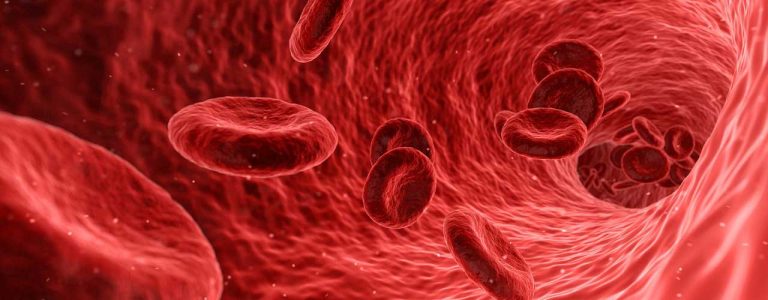Ecstasy is a man-made drug, commonly referred to as MDMA or molly. Ecstasy has both hallucinogenic properties as well as psychoactive agents. This means that it can induce visual and auditory hallucinations, as well as alter the person’s perception, behavior, thoughts, and emotions.
Taking ecstasy pills can have negative consequences. Ecstasy withdrawal comes with difficult withdrawal symptoms. These withdrawal symptoms will range in severity depending on how often the person takes ecstasy.
If a person has been taking large quantities of ecstasy over a long period of time, the withdrawal symptoms can be quite extreme.
These difficult ecstasy withdrawal symptoms can last for three to five days. There are many treatment options available to help. To minimize withdrawal symptoms, a person can opt for a medical detox program at a specialized treatment center.
Find help: Rehab Southern California
What is Ecstasy?
Ecstasy, otherwise known as MDMA, is a synthetic drug. This means it is artificially created by people. MDMA is the abbreviation for methylenedioxy-methylamphetamine, the chemical compound of the drug.
MDMA is a member of the phenethylamines drug class and is closely related to the commonly known methamphetamine. MDMA is produced as a white powder or soluble white crystal, whereas ecstasy typically comes in a tablet or pill form.
Ecstasy pills are pressed into little colorful tablets. They often have little images or symbols on the pills and each variant is given a street name. Ecstasy pills are not a pure form of MDMA, though MDMA should be present.
Effects of Ecstasy
Ecstasy tablets are typically taken by oral administration. The effects are felt around twenty to thirty minutes after ingestion. The effects of ecstasy can be quite strong.
Ecstasy is known as a ‘party drug’ as it provides a rush of energy and euphoria. As ecstasy releases serotonin and dopamine, an ecstasy user will feel strong positive emotions while they are high. The strong effects of ecstasy lead to a difficult withdrawal process.
Signs Someone Has Taken Ecstasy
There are some ways you can recognize if a person has taken an ecstasy tablet. After ingesting ecstasy tablets, the person may exhibit signs such as:
- Enlarged pupils
- Unusual jaw movements
- Sweating
- Chills
- Loss of appetite
- Increased thirst
- Positive feelings towards themselves and others
- Increased energy
These symptoms will usually last for around three to six hours after the initial ingestion of the psychoactive drug. This can be prolonged if a person takes another dose of ecstasy. This is a common practice among ecstasy users.
Dangers of taking Ecstasy Pills
Pure ecstasy tablets contain a high dose of MDMA, but they can typically contain other chemicals, such as isosafrole and MDP2P as well. It is also possible to find traces of bath salts in these pills. It is important to note that these drugs are illegally manufactured. This means it is almost impossible to determine whether or not the drugs are safe without a testing kit.
Unfortunately, there have been many fatal cases of people ingesting contaminated ecstasy pills around the world. The National Institute on Drug Abuse found that ecstasy pills can be cut with dangerous chemicals, such as PCP, amphetamine, and dextromethorphan.
In recent years in the US, the opioid crisis becomes an epidemic. As a result of this, there are growing reports of ecstasy pills laced with fentanyl. Fentanyl is a highly potent opioid that is causing overdose deaths to skyrocket.
As ecstasy pills are designed to look like a harmless party drug, on first inspection a person may never consider they could be lethal. If taking illicit substances, a person must always consider the risk of contamination.
Risk Factors of Drug Abuse
There is no specific profile for a person who will abuse MDMA. It can affect any person of any age, location, or gender. However, in the case of ecstasy tablets, MDMA abuse is most common among young people under the age of thirty.
Ecstasy abuse may be normalized among young people in certain locations where a party scene is present. Unfortunately, ecstasy and other drugs used for recreational purposes are growing in popularity. What may seem like fun and harmful behavior to a young person, could turn into drug and alcohol dependence.
Another known risk factor for substance abuse is mental health disorders. A person struggling with mental health issues like depression may self-medicate with drugs like MDMA, ecstasy, or cocaine.
A person will feel relief from the depression while taking the substance, but when the rewarding effects wear off, their mental health will be much worse. This could create a cycle of ecstasy addiction. It is not uncommon for people with substance use disorders to have a co-occurring mental health diagnosis.
The National Institute on Drug Abuse has investigated the link between ecstasy and addiction. Many studies attempting to determine whether ecstasy is addictive have come up inconclusive. However, ecstasy is proven to target the same addictive areas of the brain as other drugs known to be addictive. Luckily, there are many effective treatment options for drug abuse today.
Ecstasy activates the serotonin and dopamine neurotransmitters in the brain. These receptors are responsible for releasing the happy hormone and the reward hormone. This chemical response is what creates the feeling of euphoria among ecstasy users.
Addictive drugs like cocaine are known to target these neurotransmitters and this is the scientific conclusion for why cocaine is so addictive. Animal studies conducted on the addictive nature of MDMA found that animals did request more of the substance, just not as much as cocaine. This determines that while it is not as addictive as other drugs, a person can still develop an ecstasy addiction.
Ecstasy Addiction
Like any substance use disorder (SUD), it begins with initial use. This could be in a recreational setting or in any case of a person trying MDMA, ecstasy, or other drugs. Due to the euphoric effects of ecstasy, it is likely that after initial use, a person will try the drug again.
Over time, a person will develop a tolerance to MDMA. This will require them to take more of the substance to experience the rewarding effects. Substance abuse refers to any misuse of a substance. It can manifest as taking higher doses of a drug for an extended period of time.
Drug Dependence
If a person continues to abuse drugs like ecstasy and MDMA for a long period of time, they will develop a physical dependence. Ecstasy dependence means that the body has gotten so used to the drug being present in the system, the person will experience withdrawal symptoms if they suddenly stop taking it.
In cases like this, a person may need to seek treatment for ecstasy withdrawal. There are treatment centers with a specialized treatment process for this kind of withdrawal. It is recommended to speak with a treatment provider for ecstasy detox.
Ecstasy Withdrawal Symptoms
While the positive effects of ecstasy can last up to six hours after ingesting the drug, the withdrawal symptoms are in the acute phase for three to five days. Within the body, the ecstasy detox process begins about twenty-four hours after initial ingestion.
A person going through ecstasy withdrawal will experience physical symptoms as well as psychological symptoms. They will range in severity depending on the dosage taken. Withdrawal symptoms will be more severe in cases of ecstasy dependence.
Common symptoms of withdrawal include:
- Depression like symptoms
- High blood pressure
- Decreased sexual arousal
- Loss of appetite
- Nausea
- Extreme tiredness
- Difficulty sleeping
- Anxiety
- Inability to concentrate.
The ecstasy withdrawal timeline can vary from person to person. It will also depend on factors like overall health and age. A young person may see the symptoms of withdrawal decrease faster than someone older.
Like all stimulant withdrawal, people often report symptoms of depression. These symptoms can be rather extreme. For this reason, it is advisable to seek substance abuse treatment at a treatment facility. It is important to report any suicidal thoughts to medical professionals.
Long-Term Effects of Ecstasy Use
People who engage in drug use are at an increased risk of many mental and physical health issues. Some long-term effects of MDMA abuse include:
- Depression
- Heart disease
- Insomnia
- Inability to concentrate
- Liver disease
- Kidney disease
- Memory loss
To avoid long-term damage from ecstasy use, seek addiction treatment as soon as possible. If a person is engaging in ecstasy use with other co-occurring drug addictions, a person may consider drug rehab.
Ecstasy Withdrawal Timeline, Detox and Treatment
If you are seeking addiction treatment for the symptoms of ecstasy withdrawal, Cornerstone is here to help. At our drug detox and rehab center in Southern California, a team of dedicated health care providers offers treatment for ecstasy addiction.
Everyone’s recovery journey is unique to them. That’s why we offer a range of treatment practices at Cornerstone. We offer addiction treatment such as inpatient rehab, outpatient treatment, behavioral therapy, and a medical detox program at our dedicated detox center.
The withdrawal process from ecstasy abuse can be the hardest part of addiction treatment. At our treatment facility in Southern California, we can help with this. Cornerstone’s medical detox center provides a private and convenient solution to stimulant withdrawal. Call us to discuss treatment options today.






